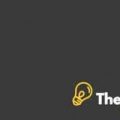Introduction
The company was established in 1917 as a rubber producer. Fisher family formed it and held 10% holding in the company. In 1940, the company diversified into plastics products. In 2000, the company became a leading global specialty-chemical company with $2.2 billion in revenues. It had employed 4200 people including 1200 offshore, operated 30 manufacturing facilities in 13 countries and sold its products in 100 countries.
The two major divisions of the company are Kent Chemical International (KCI) and Kent Chemical Products (KCP). It has three main product lines, which are Consumer products, fire protection products and medical plastic. Initially, the company grew by Licensing, exporting and Joint ventures. However, this approach changed when Ben Fisher became the CEO of the company. He began a more aggressive approach and preferred acquisition over other three methods.
The aggressive growth of the company caused many problems for the company. Luis Morales, the President of Kent Chemicals International (KCI), faced issues with the rising horizon of the company outside the United States. He was unable to handle the pressure and demands of various stakeholders. Furthermore, every subsidiary was operating to benefit itself instead of working for the benefits of the entire company. There were also problems of coordination between various segments of the company. The company is faced with the dilemma to reorganize its business to manage growth because all the attempts have failed to manage it.
The case is written to allow one to understand the problems of a growing company. It also puts light on the fact that each method of growth has its own benefits and drawbacks. It is also very important for any company to manage its growth process because if it is not managed properly, then the benefits of growth will be dominated by its problems causing the business to lose its competitive advantage.
Case Analysis
The SWOT analysis is conducted to identify the Strengths, Threats, Opportunities and Weaknesses for any business. It allows any company to analyze its external environment and devise strategies for the purpose (Shabanova, 2015).
Strengths
Overall, Kent Chemicals is a diversified business. It has a strong asset back up with 30 manufacturing facilities in 13 countries. It also offers a wide range of products from specialty lubricants to polymer additives in the construction, electronics, medical business and consumer industries.
Weaknesses
In spite of sales growth from 1937 million to 2238 million, it seems difficult for the company its supply chain. The cost of sales has risen by 27% as opposed to sales (16%) resulting in decline in gross profit margin. The trend shows that it has been negative from 2005 to 2007 by 10%.
The selling and general admin cost is 15% of sales, which seems to be very high. The management has failed to manage its expansion plans. There are issues in coordination and communication and the subsidiaries do not seem to work together for the benefit of the company. The regional managers want to achieve their goals without considering that their activities can damage other subsidiaries. The subsidiaries seem to be out of their control and an effective organizational structure is not established yet.
Threats
The supply chain of the company has become too complex to manage. There is a threat that the increasing costs of the company may give their competitors a competitive advantage. There are also rules and regulations of every country which should be followed. Moreover, the competition in the market is rising which is deteriorating Kent’s profit margins. The net income margin has fallen by 36% over three year’s period ending 2007.
There is a danger that the United States may suffer from economic recession. In this case, the financial position and financial performance of the business would deteriorate further.
Kent Chemicals Organizing for International Growth Case Solution
Opportunities
The company has the opportunity to cater for the rising global market. The population of the world is expected to grow bringing it with the potential demand and customers for the business. The population of the world is expected to grow to 7.325 billion in July 2015 (Worldometers, 2015).
What were the international market entry approaches pursued by Kent until Fisher took over as a CEO? Why did they pursue these options? What are the pros and cons of each option .Why did Fisher want to make Kent a global company?...............
This is just a sample partial case solution. Please place the order on the website to order your own originally done case solution.














